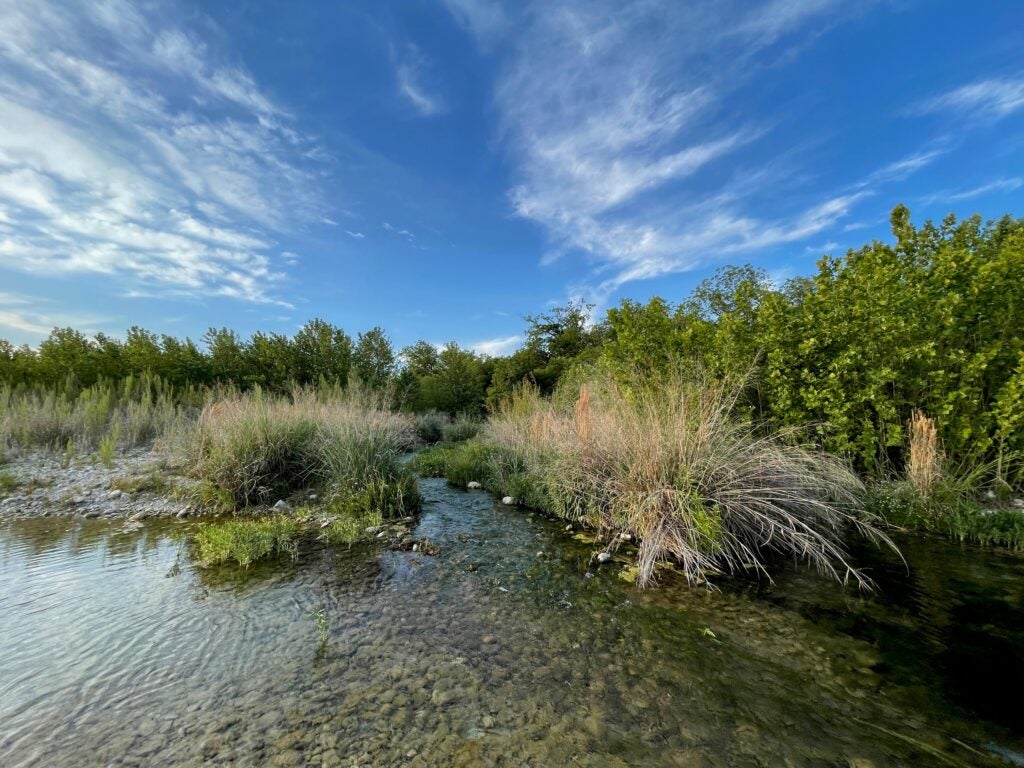
By investing $20 billion for 20 years in water infrastructure and supplies across Texas, the state is also helping to ensure that its natural resources — such as the rivers, springs, groundwater, coastal ecosystems and wildlife that define Texas — are preserved for the future.
This blog was co-authored by Jennifer Walker, Senior Director, Texas Coast and Water Program, National Wildlife Federation.
Earlier this month, Texans overwhelmingly approved Proposition 4, a constitutional amendment that will dedicate $20 billion ($1 billion a year for the next 20 years) to the Texas Water Fund to create a steady, predictable stream of money to tackle critical water challenges for both rural and urban communities. This is the largest investment in water in Texas’ history and was supported by state leaders and Texas voters across the political spectrum. Its passage demonstrates that water is a bipartisan issue and that Texans understand that our water security is tied to our economic security, our way of life, and the protection of our natural resources.
The funding can be used for a variety of strategies that expand the state’s toolbox and make Texas more resilient in the future, such as developing new, innovative water supplies; repairing aging and deteriorating water and wastewater infrastructure; and implementing water conservation strategies and flood mitigation projects. The predictability of a dedicated revenue stream lets communities and the state plan for the long term and build regional solutions, rather than quick fixes, leveraging federal grants, local investments, and private capital to increase the number of projects funded and make the dollars last longer.
Prop. 4 is truly a game changer for Texas water, but it is a down payment, not a magic bullet. Texas has more to do to secure its water future. Here are five key areas the state still needs to address.
1. Invest in data and science.
Prop. 4 dollars will build and repair water infrastructure but will not fund the data and science Texas needs to better manage its water resources, particularly when it comes to groundwater — the state’s largest but least understood water supply. Sustainable water use depends on understanding how groundwater pumping affects river flows and how much groundwater can be pumped without depleting aquifers in the future. A solid understanding of the interaction between groundwater and rivers, streams and springs is necessary to inform decision making.
2. Improve groundwater management and planning.
While Prop. 4 dollars can be used to develop alternative water supplies that will take pressure off fresh groundwater resources, groundwater will always be the cheapest source of water for rural communities and agriculture. Thus, it is critical that the state improve how it is managed. This means giving groundwater conservation districts (GCDs) clearer regulatory authority to reduce groundwater pumping in order to sustainably manage aquifers as well as funding for their planning process to adopt long-term management goals.
3. Protect the environment.
Prop 4. dollars can fund seawater and brackish groundwater desalination projects as well as produced water reuse. While these projects may diversify water supplies in Texas, there are environmental risks associated with them that the state must mitigate. Funding for these projects should require best-available science on impacts, robust monitoring, and designs that avoid ecological harm. Environmental safeguards and community engagement must be funding conditions, not afterthoughts.
4. Improve state water planning.
The State Water Plan is the roadmap for water investments in Texas, but it falls short of the holistic planning Texas needs to ensure its water security in the future. State water planning needs to incorporate hotter/drier futures from climate change; include analysis of the sustainability of recommended water supply strategies; treat the environment as a water user group and safeguard environmental flows and groundwater levels; and require clear criteria for project selection that weighs social, economic, and ecological costs.
5. Close funding gaps.
The $20 billion down payment Prop 4 makes is only a fraction of the estimated $154 billion required over the next 50 years to meet demand from a growing population and address aging infrastructure. While this $154 billion could be reduced through improved water planning, drought management, and conservation, additional funding for water infrastructure will still be needed.
Proposition 4 is a landmark investment, but it alone won’t secure Texas’ water future. Long-term water security will require investment in data and science, improved water management, holistic water planning, environmental protections, and continued infrastructure investments. If Texas treats Prop. 4 as the strong start of a strategic program to address its water resilience — not the finish line — we will be far better positioned to weather droughts, support growth, and protect our water resources for future generations.












